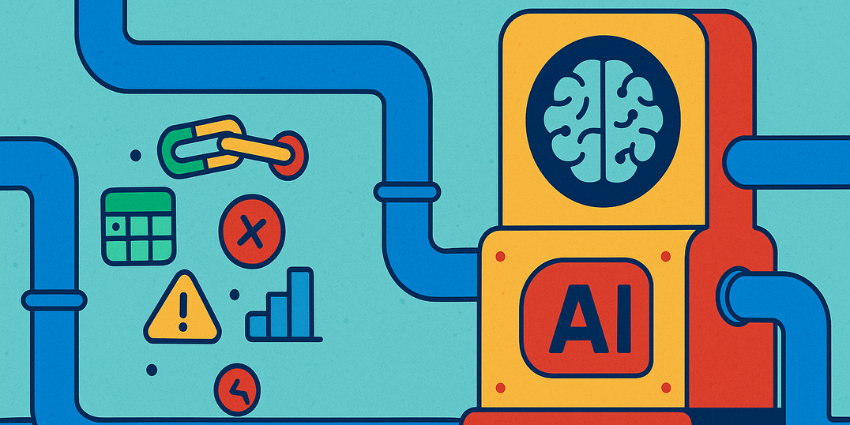Organizations are centralizing data from across customer-facing functions, like service, sales, and marketing.
HubSpot Smart CRM provides the ecosystem to do this, aligning and integrating the vendor’s six CRM apps or “Engagement Hubs”.
Those hubs span marketing, sales, service, content, operations, and commerce, each storing valuable customer journey data.
In bringing them together, HubSpot converges departmental data and helps develop a single pane of glass customer view.
With cross-hub AI-powered features (now enhanced by HubSpot Breeze) and integrations with more than 1,500 third-party apps, Smart CRM is central to HubSpot’s go-forward strategy.
What Is HubSpot Smart CRM?
HubSpot Smart CRM is a platform that unifies customer data, teams, and apps within a single ecosystem.
By connecting HubSpot’s individual hubs, Smart CRM ensures there are no gaps between customer-facing teams or complex configuration requirements.
Instead, the vendor aims to offer every business a straightforward, intuitive platform to enhance every aspect of the customer journey.
Yet, not only that, Smart CRM converges data between CX teams, enabling a “single source of truth”. As such, teams share the same up-to-date information, ensuring seamless collaboration.
Plus, these teams get access to end-to-end solutions for developing and automating more cross-departmental workflows.
In 2024, HubSpot released its Breeze suite to enable such automation, which is fully integrated into its Smart CRM. Breeze comprises a copilot, AI intelligence solution, and preconfigured agents.
Alongside this, HubSpot’s Founder and CTO Dharmesh Shah is developing an agentic AI platform (Agent.AI) that – ultimately – he hopes the CRM stalwart will pull into its portfolio.
Already, this has over 500,000 users and may eventually help Smart CRM customers extract more value from their customer experience ecosystem.
HubSpot Smart CRM: The 6 Engagement Hubs
HubSpot Smart CRM encapsulates the vendor’s six Engagement Hubs, all of which align with the same integrated database and AI tools.
Here’s some quick-fire insight into what each hub has to offer.
Marketing Hub
HubSpot first came to market to deliver “inbound marketing” software designed to streamline campaign management, amplify lead generation, and boost customer engagement.
Yet, since its early days, the CRM app has advanced significantly, with everything from Ads software for PPC campaigns to bulders for free online forms, landing pages, and newsletters.
Other key features include:
- Blogging software with integrations for website builders
- A dedicated IP address and email campaign tools
- Lead capture software and forms
- Ad management for platforms like Google Ads
- Marketing automation and campaign management
- List segmentation and lead tracking
- SMS marketing software
- Social media management tools
Additionally, marketing teams can identify and score leads, create hyper-personalized omnichannel campaigns, and access specialized SEO software.
Then, with HubSpot Breeze, marketers gain access to AI features for generating campaign strategies, monitoring results, and creating captions, emails, and content in seconds.
There’s even a pre-built Breeze Social agent, which leverages AI to manage entire social media campaigns on behalf of teams.
Sales Hub
The Sales Hub within the HubSpot Smart CRM is an all-in-one solution for managing sales processes, spotlighting critical insights, and leveraging automation.
Indeed, teams get various tools for managing tasks, payments, and customer profiles, alongside sending emails and outreach to prospects. Other features include:
- Communication tools, such as VoIP software, email, and live chat
- Prospecting and lead management software
- Free meeting scheduling tools
- CPQ software and payment management
- Sales reports and performance management tools
- Sales automation sequences
- Sales and deal pipeline management
Like all of the other engagement hubs in HubSpot’s CRM suite, the Sales Hub has plenty of AI-powered features.
Companies can use AI for forecasting and lead qualification or to create content for personalized outreach messages.
Finally, there’s an AI-prospecting agent available through Breeze, which helps teams focus their outreach efforts on decision-makers and high-quality leads with in-depth insights.
Service Hub
When HubSpot introduced its Service Hub, it claimed to “reinvent” the traditional CRM app, unifying customer support and success strategies in a single environment.
While others have since followed suit, the solution’s launch underlined its vision for a unified CRM environment. Ultimately, that led to the Smart CRM concept.
Service Hub includes the core tools teams need from a modern CRM, including a robust ticketing system, customer portal for self-service, knowledgebase software, analytical tools, and issue-tracking capabilities.
Additional features include:
- Omnichannel customer service
- Customer feedback software
- Customer success management tools
- SLA management solutions
- Service and support analytics
Again, AI plays a significant role within Service Hub, with HubSpot allowing customers to infuse pre-built AI agents with proprietary data, so they can autonomously handle every stage of specific ticket resolution processes.
These agents can also handle multi-stage queries around the clock, update CRM profiles, and more.
Plus, human agents can access tools like Breeze Copilot for instant suggestions and support during conversations with customers, helping them increase satisfaction and reduce churn.
Content Hub
Content Hub is the latest addition to Smart CRM, providing a centralized platform for content creation teams.
The CRM app builds on the core features of the Marketing Hub with unique tools for developing a brand voice and building online assets, like websites.
With Content Hub, businesses can also create and repurpose personalized content with AI before publishing it across third-party sites (and their own website).
Other notable features include:
- Full website builder with themes and AI support
- A single sign-on and SSL certificates
- Comprehensive activity reports
- Content creation, remix, and embedding tools
- AI-powered case study generator
- Podcast production software
Moreover, HubSpot has added AI tools to help create scripts for podcasts, blogs, articles, case studies, and press releases. Companies can even use AI to track the impact of each content strategy and dynamically personalize content.
Content Hub may also help businesses enhance their content for better search engine rankings with keyword suggestions.
Lastly, users can ensure consistency across channels by harnessing AI that suggests brand voice improvements as they create content.
Operations Hub
The HubSpot Operations Hub keeps teams aligned and informed with the right data. It empowers the team to sync, clean, and curate customer data while automating business processes across departments.
At the core of the Operations Hub is HubSpot’s programmable automation software, enabling companies to design multi-step automated processes with JavaScript that combine multiple HubSpot Hubs and third-party tools.
Companies also get access to data sync software to connect data points from multiple distributed apps and software that can automatically clean data, remove duplicates, and query issues.
Plus, there are highly customizable reporting dashboards for real-world insights to improve decision-making software.
HubSpot also connects to Snowflake Data solutions and the Breeze Intelligence suite, which offers tools for data enrichment, buyer intent analysis, and form shortening capabilities.
Finally, HubSpot introduced the “Data Quality Command Center” for a centralized view of data health.
Commerce Hub
Finally, the Commerce Hub is a solutions suite that helps businesses manage all of their commerce processes in one place.
Indeed, its ecosystem allows for quotes, payments, reporting, and more, so organizations don’t need to rely on separate apps.
Teams can also boost their chances of getting paid faster with branded invoices, payment links, and seamless quote creation capabilities.
Additional tools for boosting revenue include recurring subscription options, B2B checkouts, and flexible payment processing solutions.
Moreover, companies can save significant time with automation, creating end-to-end workflows for billing and payment tracking, as well as connecting HubSpot to third-party accounting tools like QuickBooks.
On top of that, HubSpot offers in-depth analytics, revenue reporting capabilities, and its own Payment processor: HubSpot Payments.
HubSpot Commerce Hub is now globally available, supporting payments in more than 20 countries.
HubSpot Smart CRM: The Pricing Structure
Although cheaper CRM platform options are available, HubSpot takes a very transparent and flexible approach to pricing.
First, companies can access a host of free tools for beginners across all of the six hubs mentioned above.
After that, they can choose from a range of individual hubs, starting with the cheaper “Starter” options (around $20 per seat per month). There are also “Professional” hubs and “Enterprise” grade options for each hub.
For companies that want to unify the various hubs into a Smart CRM, HubSpot offers “Customer Platform” plans.
Again, there’s a free plan, Starter plan, Professional plan, and Enterprise plan, combining multiple features from each of the six engagement hubs.
The prices for these plans begin at $15 per month for the Starter plan, $1,170 for Professional, and $4,300 for Enterprise.
Notably, some plans come with Breeze AI capabilities (Copilots and agents) built in, but Breeze Intelligence is charged separately on a “per credit” basis.
HubSpot Smart CRM: The Power of Unity
Companies are free to mix and match hubs and features when they need them with HubSpot Smart CRM.
However, the real power of this platform comes from combining the various hub options.
As noted, the Smart CRM solution aligns all six engagement hubs. It creates a unified customer view, with in-depth insights into all interactions, operations, and opportunities.
That unified view of the customer (and team performance) becomes even more helpful with the addition of AI.
The HubSpot AI engine (Breeze) offers end-to-end tools, from Copilot and AI Agents to data intelligence, to bolster team performance.
In pulling this all together, organizations may – ultimately – achieve that 360-degree view that has proved so elusive for many organizations.







